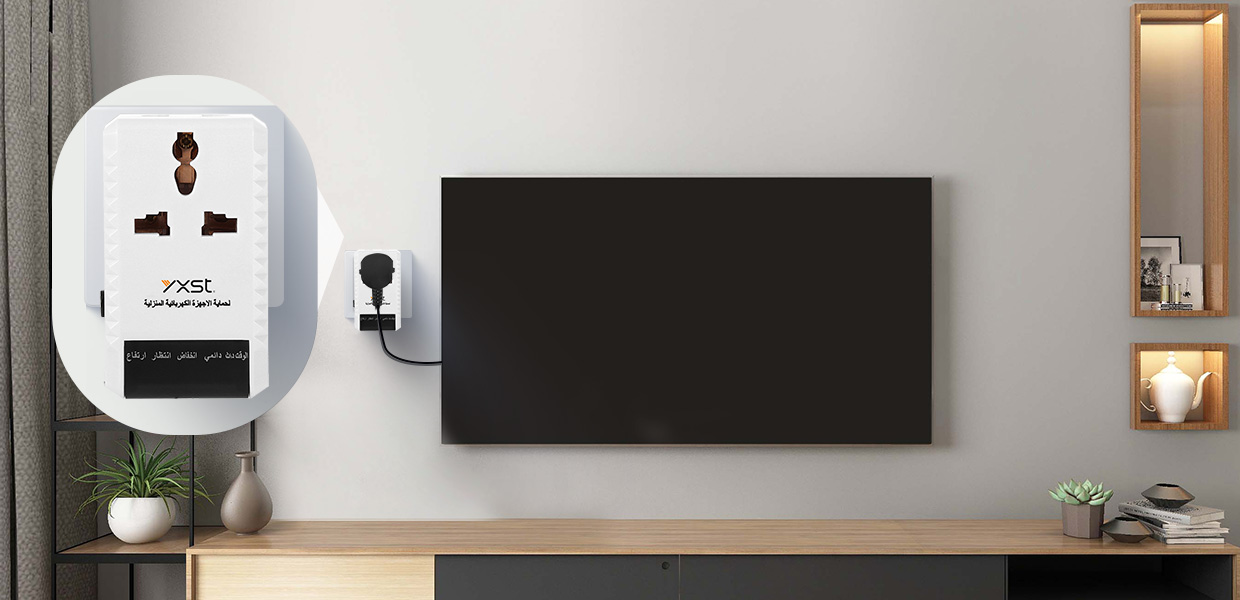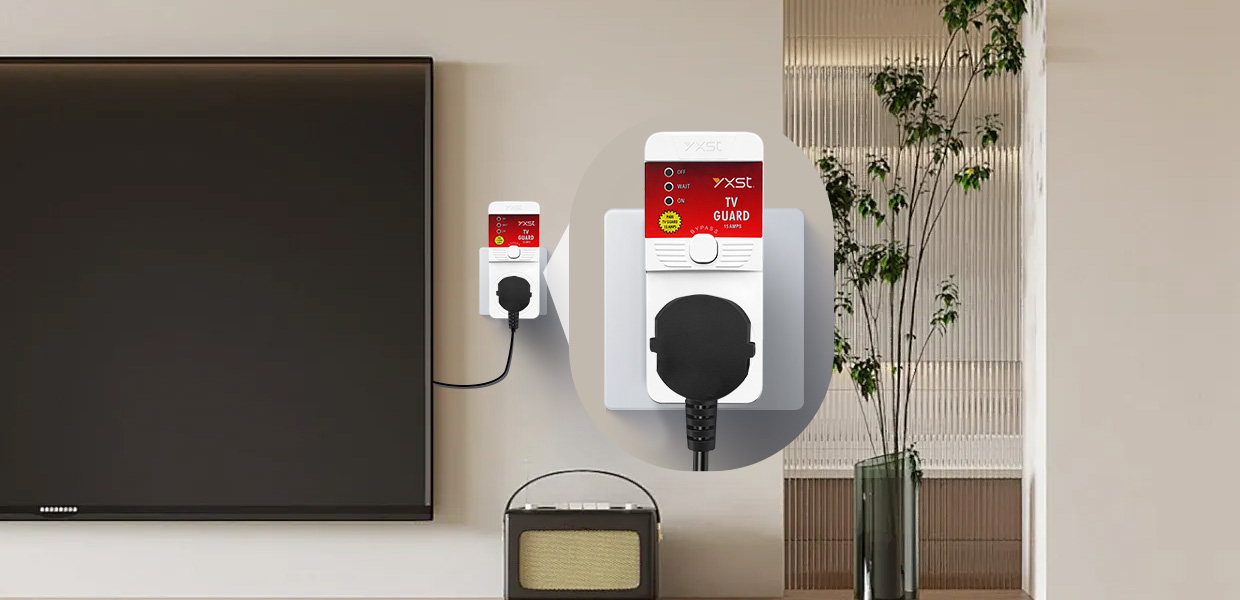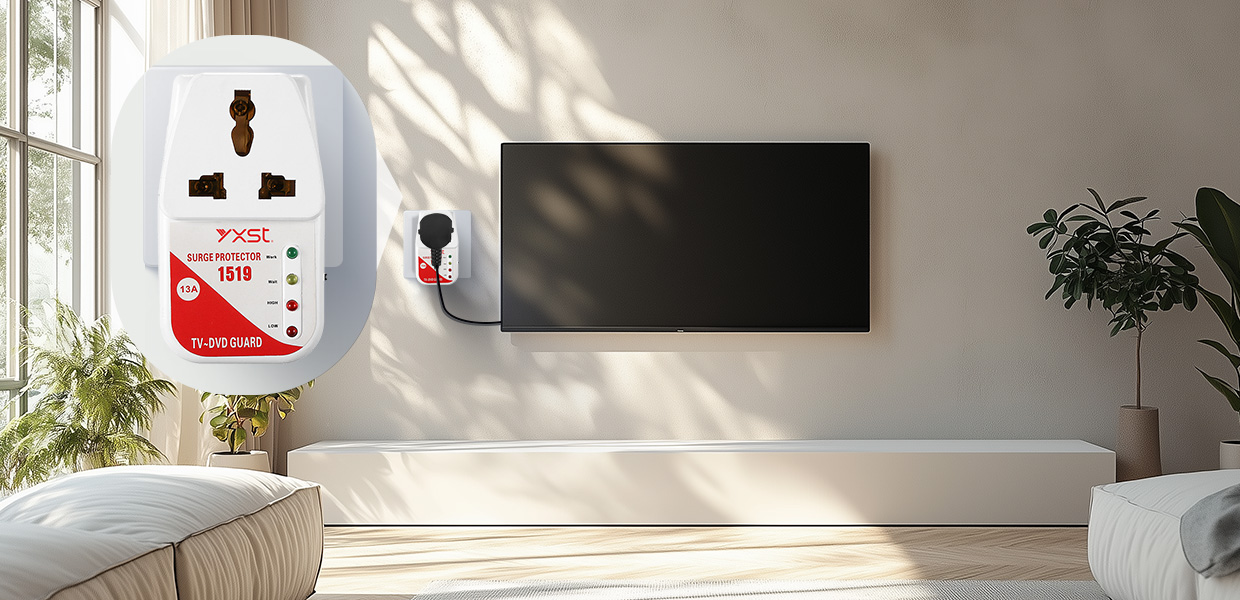TV power protector guide: best surge protection solution
Date:2025-04-07 Click:557

The role and necessity of TV power protectors
1.1 Threats of surges to TVs
Surges (instantaneous surges in voltage) may be caused by lightning strikes, power grid fluctuations, or the start and stop of high-power electrical appliances. Precision components such as LCD screens and motherboard chips are susceptible to voltage. Long-term exposure to unstable voltage environments may cause problems such as screen flickering and motherboard burnout.
1.2 Core functions of protectors
- Voltage stabilization: stabilize the input voltage within a safe range (220V±10%).
- Surge absorption: Absorb instantaneous high voltage through components such as MOV (metal oxide varistor).
- Overload protection: Automatically cut off the power supply when the current exceeds the threshold to prevent damage to the equipment.
The focus of controversy: Do all households need to install it?
- Supporting point of view: It must be installed in areas prone to lightning strikes, old circuits, or areas with frequent voltage fluctuations.
- Opposing point of view: The built-in power module of modern TVs already has basic protection functions, and the benefits of additional protectors in daily use are limited.
Power protection solutions for TVs of different sizes
2.1 32-43 inch small and medium-sized TVs
- Power demand: usually 50-150W, current ≤0.7A.
- Recommended configuration:
- Surge capacity: 1000-1500 joules (J).
- Rated current: 10A protector can meet the requirements. It is recommended to choose a smart socket with a USB interface to facilitate the charging of mobile phones and other devices.
2.2 55-65 inch mainstream TV
- Power requirement: 150-300W, current 1.4-1.8A.
- Key parameters:
- Response time: ≤25 nanoseconds (ns), ensuring fast surge interception.
- Residual voltage value: ≤1.5kV, reducing the impact of high voltage on the motherboard.
2.3 75-inch and above large-screen TV
- Special requirements: high power (300-500W), multiple interfaces (HDMI 2.1, eARC, etc.).
- Advanced configuration:
- Two-level protection: first-level lightning arrester (Imax≥40kA) + second-level fine protection (Up≤1.2kV).
- Intelligent management: support APP remote control, real-time monitoring of voltage and energy consumption.

Guide to Avoiding Pitfalls in Purchasing: Analysis of 5 Core Parameters
3.1 Current Capacity (Imax)
- Definition: Maximum surge current that can be sustained at a time, in kiloamperes (kA).
- Home use recommendation: 10-20kA, 40kA can be selected in areas prone to lightning strikes.
3.2 Residual Voltage (Up)
- Standard: ≤1.5kV (ordinary TV), ≤1.2kV (4K/8K high-end models).
3.3 Response Time
- Threshold: More than 90% of surges can be intercepted within 25 ns, and precision equipment requires ≤ 15 ns.
3.4 Protection Mode
- Basic: L-N (live-neutral) protection.
- High-end: L-N, L-G (live-ground), N-G full protection, suitable for old houses without grounding.
3.5 Additional functions
- Filtering and noise reduction: reduce electromagnetic interference and improve sound and picture quality.
- Self-recovery: automatically power on after abnormal voltage disappears, avoiding frequent manual restarts.
FAQ
Q1: Is it better to plug the TV directly into the wall or use a protector?
If the voltage in the living area is stable and the TV has built-in overvoltage protection, you can use the wall plug directly. But in most cases, the protector can extend the life of the TV, especially recommended for high-end models of 10,000 yuan.
Q2: Will the protector increase the standby power consumption of the TV?
The standby power consumption of a high-quality protector is ≤0.5W, and the annual power consumption is less than 1 kWh, which can be ignored. Inferior products may increase energy consumption due to circuit design defects.
Q3: How to determine whether the protector is invalid?
Observe the indicator light regularly: green is normal, and red is always required. It is recommended to check the status of the MOV component every 2-3 years.
Q4: Can the protectors of TVs of different sizes be used universally?
32-55 inches can share the 10-16A universal model, and 65 inches and above need to choose 20A and above specifications according to the actual power to avoid overload.
---
V. Installation and Usage Recommendations
5.1 Installation Location
- Priority: Main switch > TV dedicated circuit > Ordinary socket.
- Tips for avoiding pitfalls: Avoid sharing circuits with high-power appliances such as air conditioners and refrigerators.
5.2 Daily Maintenance
- Cleaning: Wipe with a dry cloth every six months to prevent dust from causing poor contact.
- Test: Use a multimeter to check whether the output voltage is within the safe range of 210-230V.
Conclusion
Some technical parameters in this article are quoted from surge protection standards and industry white papers. Please refer to actual tests for specific product selection.



